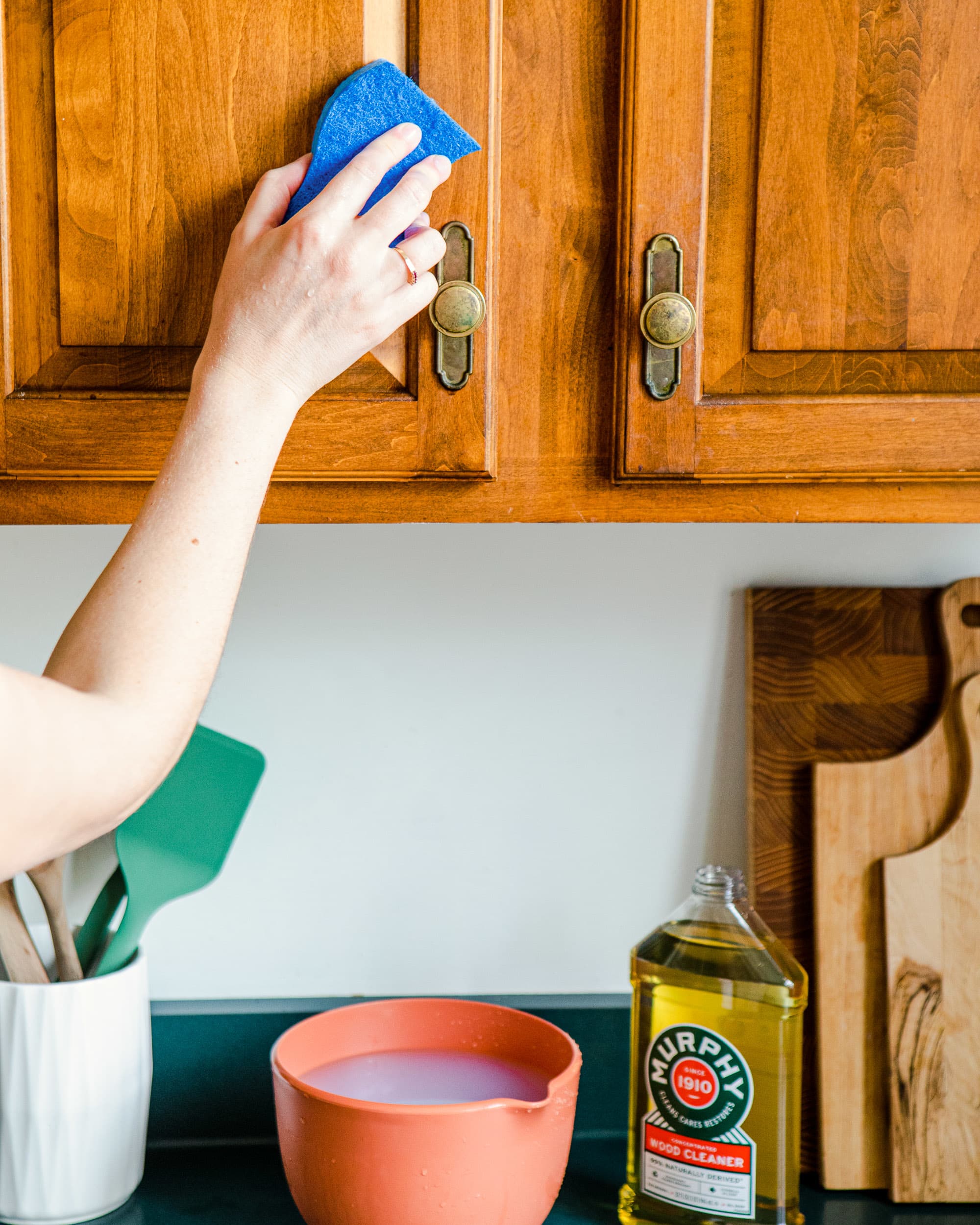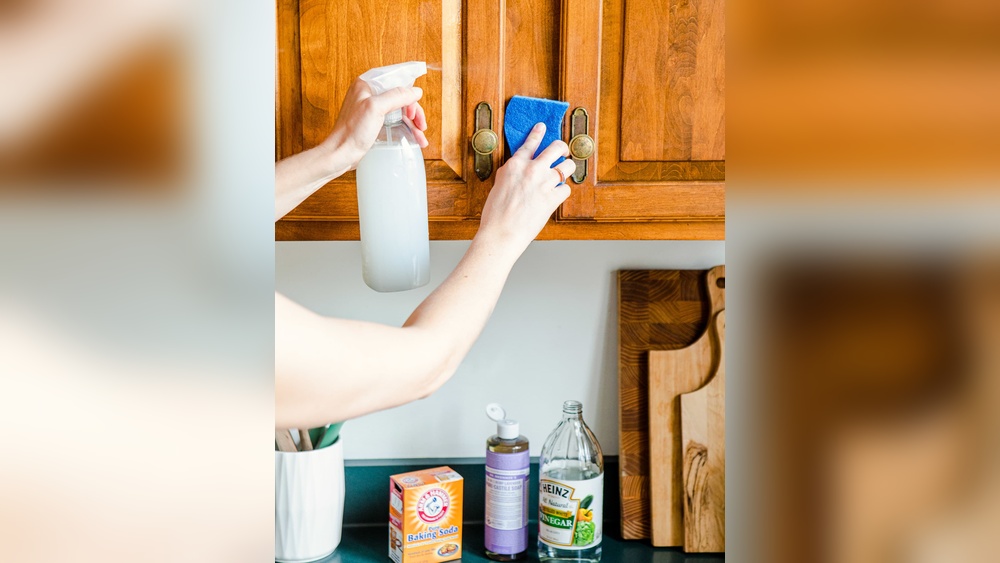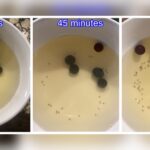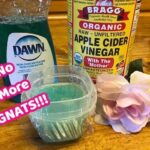Grease buildup on your kitchen cabinets can make your entire kitchen look dull and dirty, no matter how much you clean. If you’ve noticed sticky, grimy spots that just won’t go away, you’re not alone—and the good news is, you don’t have to live with it.
Imagine opening your cabinets and seeing them shiny and fresh again, without scrubbing endlessly or using harsh chemicals. In this guide, you’ll discover simple, effective ways to remove grease from your kitchen cabinets, using easy tools and ingredients you probably already have at home.
Ready to bring back that clean, inviting look to your kitchen? Keep reading, because your cabinets are about to get a serious makeover.
Causes Of Grease Buildup
Cooking residue is a main reason grease builds up on kitchen cabinets. When you fry or sauté, tiny oil droplets fly and stick to surfaces. Over time, these droplets form a sticky layer that is hard to clean.
Improper ventilation makes grease stay longer in the kitchen. Without good airflow, smoke and oil particles settle on cabinets. This causes a greasy film that looks dirty and dull.
Lack of regular cleaning allows grease to build up more. If you skip wiping cabinets often, the grease hardens. This makes it tougher to remove and can damage the cabinet finish.
Choosing The Right Cleaning Tools
Microfiber cloths are excellent for removing grease without scratching surfaces. They trap dirt and grease effectively. Use them damp with warm water and a mild soap for best results.
Soft sponges help clean grease gently. Choose ones that are non-abrasive to avoid damaging cabinet finishes. They work well with soapy water to lift grease away.
Non-abrasive scrubbers are useful for tougher grease spots. They scrub without scratching or dulling cabinet surfaces. Use them carefully to protect your cabinets.
Effective Cleaning Solutions
Dish soap and warm water is a simple way to clean grease. Mix a few drops of dish soap with warm water. Use a soft cloth to wipe the cabinets in circular motions. This helps break down the grease without harming the surface.
Vinegar and baking soda create a natural cleaner. Sprinkle baking soda on a damp cloth. Spray vinegar lightly on the cloth or cabinet. Rub gently to lift grease and grime. Rinse with a clean, wet cloth and dry well.
Commercial degreasers are made for tough grease. Choose one safe for your cabinet type. Follow the instructions on the label. Test on a small area first to avoid damage. Wipe off with a clean cloth after use.

Step-by-step Cleaning Process
Start by mixing warm water with a few drops of dish soap. Use a clean cloth or sponge and dip it in the solution. Wring out the cloth well to avoid soaking the cabinets.
Apply the mixture gently on the greasy areas. Let it sit for about 5 to 10 minutes to break down the grease. This helps to loosen the sticky oil without damaging the surface.
Use a soft brush or cloth to scrub the cabinets in small circular motions. Avoid harsh scrubbing to protect the cabinet finish. Wipe off the loosened grease with a clean damp cloth to remove all residue.
Finally, dry the cabinets with a soft, dry towel. To add shine, polish the surface using a small amount of olive oil or cabinet polish. This step keeps your cabinets looking clean and fresh.
Special Care For Wood Cabinets
Avoid using too much water on wood cabinets. Excess water can cause the wood to swell and warp. Use a damp cloth instead of a soaking wet one. Wring out the cloth well before wiping.
Oil-based cleaners work well for removing grease without damaging wood. These cleaners help to break down oily residues and protect the wood surface. Apply gently with a soft cloth.
Maintaining the finish is key to keeping cabinets looking good. Use polish or wax designed for wood. This protects the wood and keeps it shiny and smooth. Regular care helps prevent build-up of dirt and grease.

Natural And Eco-friendly Options
Lemon juice mixture works well to cut grease naturally. Mix lemon juice with warm water and a little white vinegar. Dip a soft cloth in the solution and wipe the cabinets gently. The natural acidity breaks down grease without harsh chemicals.
Castile soap is a gentle, plant-based cleaner. Combine a few drops with warm water for a mild yet effective grease remover. Use a sponge or cloth to clean the cabinet surfaces. It rinses off easily and is safe for most finishes.
Essential oils for freshness can be added to your cleaning mix. Oils like tea tree, lemon, or lavender not only smell nice but also have natural antibacterial properties. Just add a few drops to your lemon juice or Castile soap solution for extra cleaning power and a fresh scent.
Preventing Future Grease Accumulation
Regular wiping keeps grease from building up on kitchen cabinets. Use a soft cloth with mild soap and warm water. Wipe cabinets often, especially after cooking. This stops grease from sticking and makes deep cleaning easier later.
Improving kitchen ventilation helps reduce grease in the air. Use exhaust fans or open windows while cooking. Good airflow moves grease particles away from cabinets. It also keeps the kitchen fresh and less sticky.
Using cabinet protectors can block grease from reaching cabinet surfaces. Plastic or silicone liners work well inside cabinets. Clear films or covers can protect outside surfaces. These protectors save time and effort in cleaning.

Troubleshooting Stubborn Grease
Baking soda paste works well on tough grease. Mix baking soda with a little water to form a thick paste. Apply it to the greasy areas and let it sit for 10-15 minutes. Then, gently scrub with a soft cloth or sponge. This method helps break down the grease without harming the cabinet finish.
Rubbing alcohol is another option. Dampen a cloth with rubbing alcohol and rub the greasy spots carefully. It cuts through grease effectively and dries quickly. Test on a small area first to avoid damage. Use this method for small, stubborn grease patches.
Calling a professional is best when grease is very thick or old. Professionals have special tools and cleaners to handle tough grime safely. They also prevent damage to your cabinets that harsh cleaning might cause. Consider this if home methods do not work well.
Frequently Asked Questions
How Do You Remove Icky Sticky Greasy Gunk From Kitchen Cabinets?
Mix warm water with dish soap. Dip a microfiber cloth, wring it out, and scrub cabinets in circular motions. Rinse and dry with a clean cloth. Repeat if needed. This removes sticky, greasy gunk effectively and safely.
How To Get Tough Grease Off Kitchen Cabinets?
Mix warm water with dish soap. Use a microfiber cloth to scrub cabinets gently. Wipe off grease in circular motions. Dry with a clean cloth. Repeat if needed.
What Is The Best Degreaser For Kitchen Cabinets?
Dawn dish soap mixed with warm water works best to degrease kitchen cabinets effectively. Use a soft cloth to scrub and wipe clean.
Does Wd-40 Remove Grease From Kitchen Cabinets?
WD-40 can loosen grease on kitchen cabinets but may leave oily residue. Use dish soap and warm water for safer, effective cleaning.
Conclusion
Cleaning grease from kitchen cabinets takes patience and the right tools. Use gentle cleaners like dish soap and warm water to avoid damage. Regular wiping prevents grease buildup and keeps cabinets fresh. Always dry cabinets well after cleaning to protect the wood or finish.
A little effort now saves a lot of scrubbing later. Keep your kitchen looking neat and welcoming every day. Simple steps make a big difference in your kitchen’s cleanliness.

Yes, working as , Food Blogger and Product Reviewer for last 6 years. Here you will get amazing deals for Smart kitchen products. I am your best source for the latest update in cooking trends. I provide insightful articles, reviews, and analysis on cutting-edge kitchen gadget. My mission is to empower readers with the knowledge they need to stay ahead in a rapidly evolving coking world. Join me as we explore the future of food technology and how it shapes our lives today and tomorrow.





